Zion National Park, a gem hidden in the heart of Utah, boasts a rich history and breathtaking landscapes. The Virgin River, over millions of years, has sculpted this natural wonder, mesmerizing explorers, adventurers, and nature enthusiasts for centuries. Let’s explore the compelling facts that make Zion a true masterpiece of nature’s art.
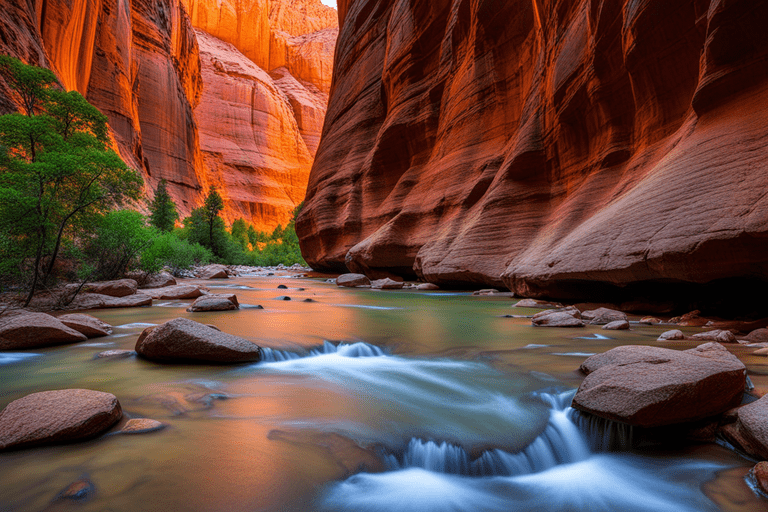
As European exploration reached the area in the 18th century, Zion’s cultural tapestry grew richer, blending ancient traditions with new perspectives. The recognition of this unique region’s significance led to its designation as a national park in 1919, enshrining its protection for generations to come.
Zion’s transformation from a remote frontier to a beloved national park mirrors the broader conservation movement in the United States. Today, Zion stands as a testament to the foresight of those who recognized the importance of preserving such natural wonders. Its breathtaking beauty and dynamic geological narrative captivate millions of visitors annually, offering a glimpse into the enduring power of nature.
Quick Facts About Zion National Park
- Establishment: Zion National Park was established on November 19, 1919, by President Woodrow Wilson, making it Utah’s first national park.
- Historical Evolution: Originally designated as Mukuntuweap National Monument in 1909 by President William Howard Taft, it underwent a name change to Zion before gaining national park status.
- Diverse Landscape: Encompassing 229 square miles, Zion boasts high plateaus, intricate sandstone canyons, and vibrant waterfalls with hanging gardens.
- Engineering Marvel: The Zion-Mt. Carmel Highway and Tunnel, completed in 1930, connects Zion to the Grand Canyon and Bryce Canyon, offering breathtaking views through a 1.1-mile tunnel.
- Archeological Treasures: Zion preserves archeological sites dating back over 10,000 years, showcasing structures like granaries and highways.
- Adventurous Hikes: Angels Landing, standing 1,488 feet above the Virgin River, is renowned for its thrilling yet challenging 2.2-mile hike, listed among the world’s most dangerous.
- Dynamic Landscape: The Virgin River continually shapes Zion Canyon, removing a million tons of sediment annually during flash floods, resulting in ongoing changes to the canyon’s width and river channel.
- Climbing Paradise: With 2,000-foot sandstone cliffs, Zion is a mecca for climbers, offering world-renowned big wall climbs.
- The Subway: Not a form of public transportation, Zion’s Subway is a unique journey requiring permits, route finding, rappelling, and even swimming.
- Natural Wonder: Despite not being known for natural stone arches, Zion is home to Kolob Arch, one of the world’s largest freestanding arches, spanning over 287 feet.
Also Read this: Captivating Facts about Rocky Mountain Park
Why “Zion” National Park?
- The term “Zion” originates from ancient Hebrew, chosen by Mormon pioneers in the late 1800s, reflecting a meaning of sanctuary or refuge.
- Formerly the Mukuntuweap National Monument, the park’s name changed to Zion in 1919, covering 229 square miles of captivating red rock landscape.
Zion’s Unique Features
- Ancient Civilization: Zion was once home to the Anasazi around 1,500 B.C., evident in sandstone villages and rock art.
- Majestic Canyon: Carved over millions of years by the Virgin River, Zion Canyon reaches 2,000 feet in depth, offering iconic hikes like The Narrows.
- Rare Wildlife: The endangered California Condor, with a 10-foot wingspan, finds refuge in Zion, saved from extinction through a conservation program.
Also Read this: Interesting Facts about Yosemite National Park in the USA
Ideal Time to Visit Zion
- Weather Extremes: Spring and fall offer mild weather, but be prepared for occasional rain. Summers can reach 100°F, while winters can drop to -20°F.
- Diverse Wildlife: With 79 mammal species, 32 amphibians/reptiles, 8 fish species, and 289 bird species, Zion showcases diverse animal life.
Noteworthy Attractions
- Kolob Arch: Among the world’s largest freestanding arches, Kolob Arch at 287 feet is a hidden gem in Zion’s backcountry.
- Angels Landing: Considered one of America’s scariest hikes, Angels Landing rewards the cautious with stunning 360-degree views.
- Zion’s “Subway”: A challenging 9-mile hike through North Creek, requiring permits and subject to daily limits.
Visitor Stats and Popularity
- Annual Visitors: Zion attracts 4.3 million visitors yearly, experiencing a 60% increase in the last decade, owing to its proximity to Las Vegas and stunning landscapes.
Also Read this: 20 Astonishing Fun Facts about Acadia National Park
The Evolution of Zion
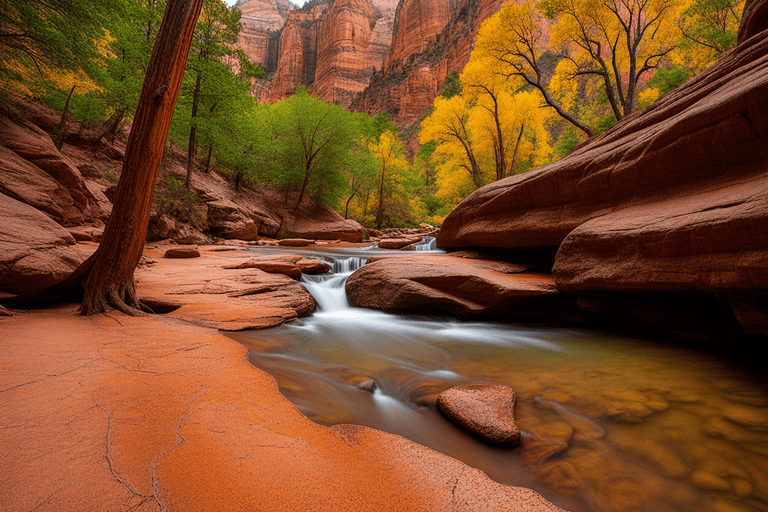
Established on November 19, 1919, by President Woodrow Wilson, Zion National Park showcases nature’s artistry in Utah’s canyon country. Spanning 229 square miles, it mesmerizes with high plateaus, intricate sandstone canyons, and vibrant waterfalls.
Zion’s Historical Odyssey

Before achieving national park status, Zion underwent a transformative decade. In 1909, it began as Mukuntuweap National Monument, later evolving and adopting the name Zion. Today, this surreal red rock landscape preserves the Paiute tribe’s heritage, captivating visitors globally.
The Zion-Mt. Carmel Highway
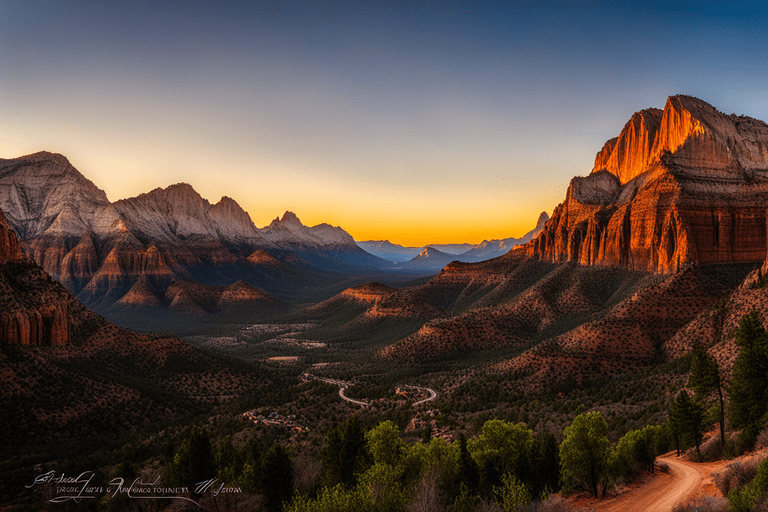
Inaccessibility once hindered Zion’s allure, prompting the construction of the Zion-Mt. Carmel Highway and Tunnel in 1930. Connecting the park to the Grand Canyon and Bryce Canyon, the 1.1-mile tunnel seamlessly blends with sandstone cliffs, providing awe-inspiring views that harmonize human ingenuity and natural splendor.
Also Read this: 28 Amazing Facts about Glacier National Park
Zion’s Transportation Revolution
The highway, overcoming past limitations, symbolizes a transportation revolution, allowing visitors to seamlessly traverse Zion’s mesmerizing landscapes. This engineering marvel remains a testament to the park’s commitment to accessibility and preservation.
Archeological Riches
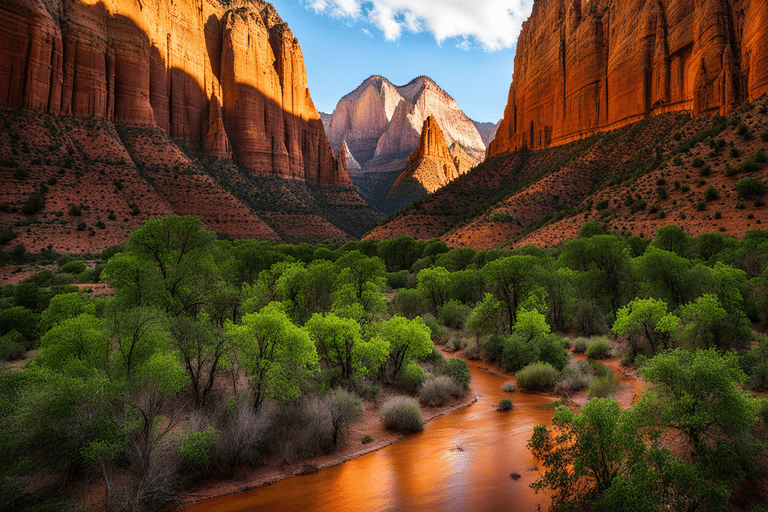
Beyond stunning landscapes, Zion safeguards a tapestry of human history. Inhabited for over 10,000 years, the park’s canyons and plateaus hold remnants of ancient civilizations. From granaries to improbable highways, these structures stand as tributes to the ingenuity of those who once called Zion home.
Zion’s Archeological Conservation
Zion’s commitment to preserving archeological sites ensures that these remnants endure, allowing present and future generations to connect with the ancient cultures that thrived in this remarkable landscape.
A Perilous Beauty
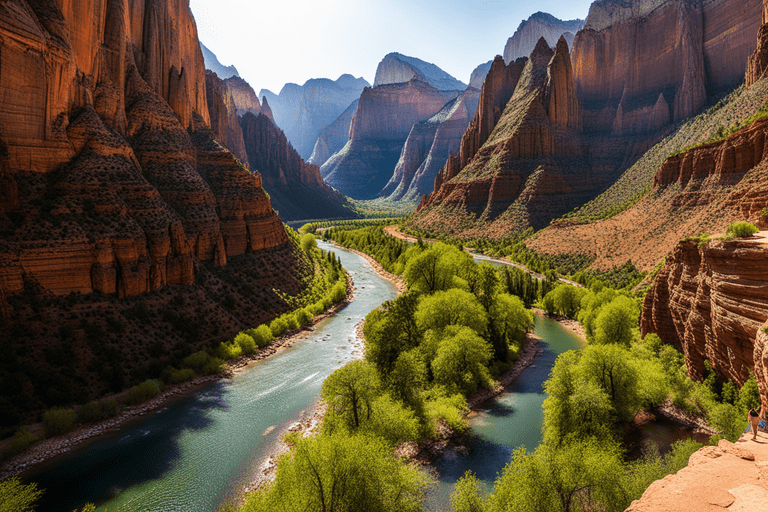
Angels Landing, standing 1,488 feet above the Virgin River, offers unparalleled views but demands respect. Despite its seemingly tame 2.2-mile hike, it challenges adventurers with switchbacks, drop-offs, and exposed edges.
Navigating the Heights
Labeled one of the world’s most dangerous hikes, Angels Landing rewards the prepared with an otherworldly panorama. Safety measures and preparation are key to conquering this perilous beauty and experiencing its breathtaking views.
Nature’s Sculptor
The Virgin River, a relentless sculptor, carves through Zion Canyon, removing a million tons of sediment annually during flash floods. This perpetual transformation widens the canyon and deepens the river channel, ensuring that each visit unveils a slightly altered, yet equally mesmerizing, landscape.
Zion’s Geological Symphony
Understanding the dynamic forces shaping Zion’s landscape adds a layer of appreciation for the ongoing geological processes that make each visit a unique encounter with nature’s artistry.
A Climber’s Paradise
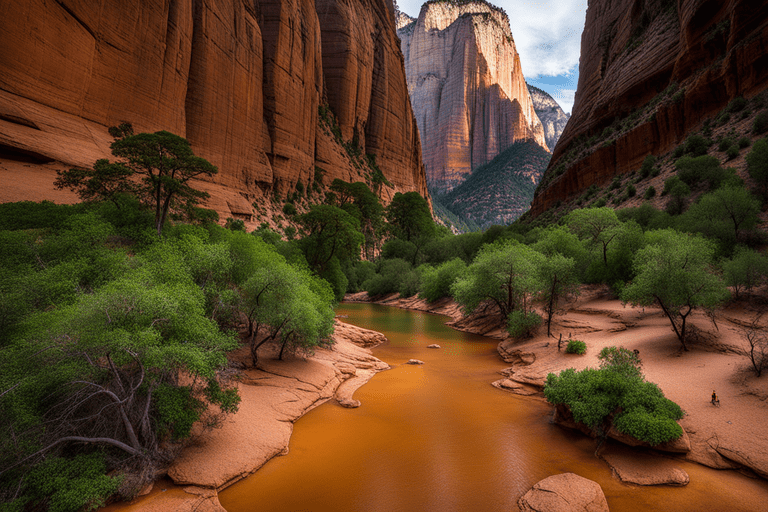
Zion’s 2,000-foot sandstone cliffs beckon climbers worldwide. Renowned for big wall climbs, the park offers prime conditions from March through May and September through November.
The Thrill of Zion’s Climbing Challenges
Climbers exploring Zion’s vertical world encounter not just physical challenges but a profound connection with the ancient forces that shaped these monumental sandstone cliffs.
A Hidden Gem
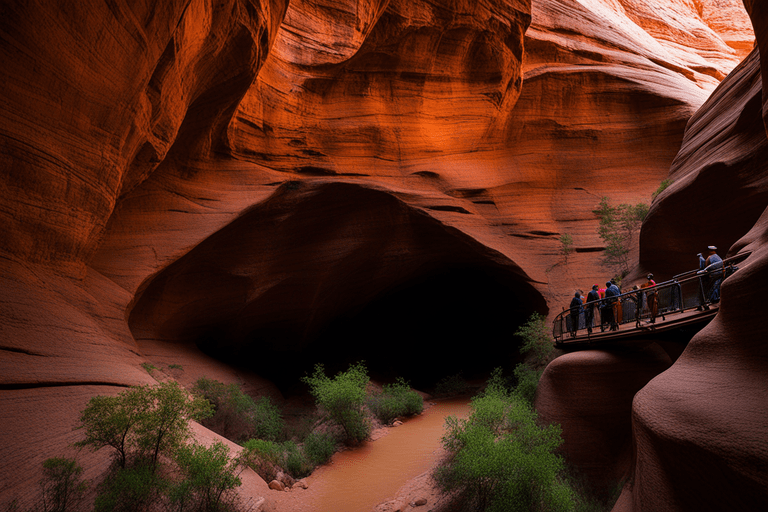
Zion’s Subway, not a form of public transportation, presents a unique journey. With no trails to guide, it demands route finding, rappelling, and even swimming.
A Massive Natural Wonder
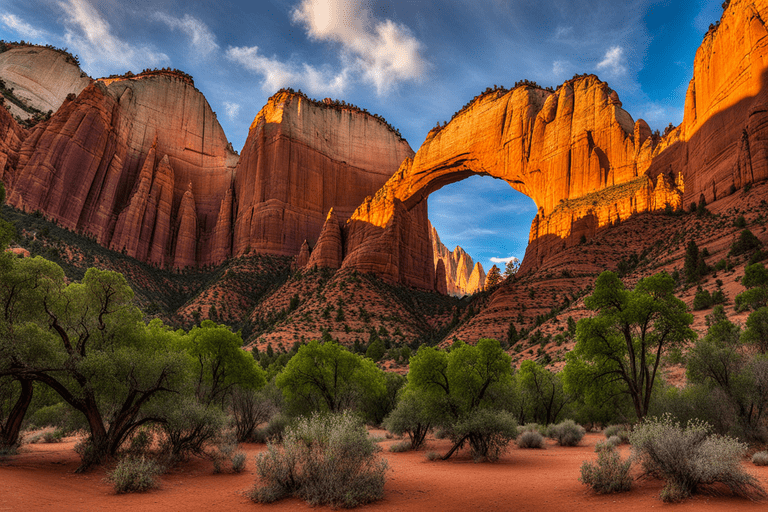
While not known for natural stone arches, Zion houses Kolob Arch, one of the world’s largest freestanding arches.
Discovering Kolob Arch
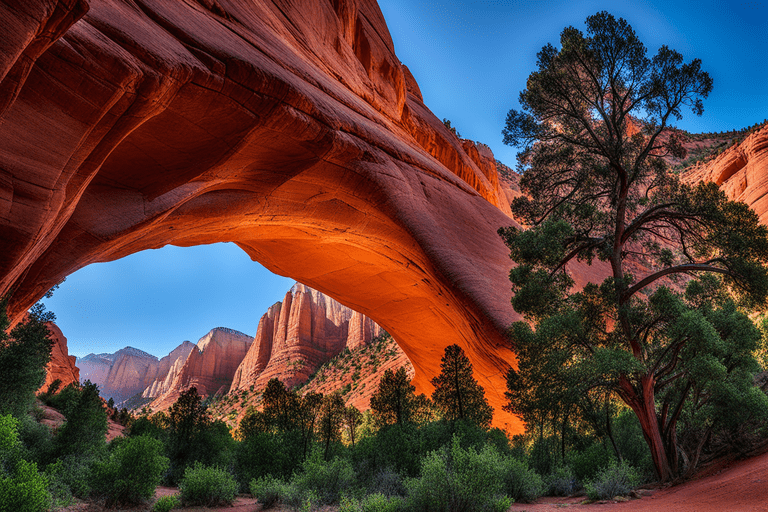
Located in the Kolob Canyons District, this majestic arch, spanning over 287 feet. Rivals the grandeur of Landscape Arch at Arches National Park. Its hidden location adds an element of exploration and awe to the visitor’s experience.
FAQs
The name “Zion” comes from ancient Hebrew, chosen by Mormon pioneers in the late 1800s, signifying sanctuary or refuge.
Carved over millions of years by the Virgin River. Zion Canyon reaches depths of 2,000 feet, offering stunning hiking opportunities, including The Narrows.
Spring and fall offer moderate weather, but occasional cool, rainy spells. Summers can reach 100°F, and winters, with occasional snow, can drop to -20°F.
With 79 mammal species, 32 amphibians/reptiles, 8 fish species, and 289 bird species, the park’s varied terrains support a rich and diverse array of animal life.
Standing at 1,488 feet above the Virgin River, Angels Landing presents a 2.2-mile hike with steep trails, sheer drops, and exposed edges, offering rewarding 360-degree views.
Attracting 4.3 million visitors annually, the park’s popularity has surged by 60% in the last decade, thanks to its stunning landscapes and proximity to Las Vegas.